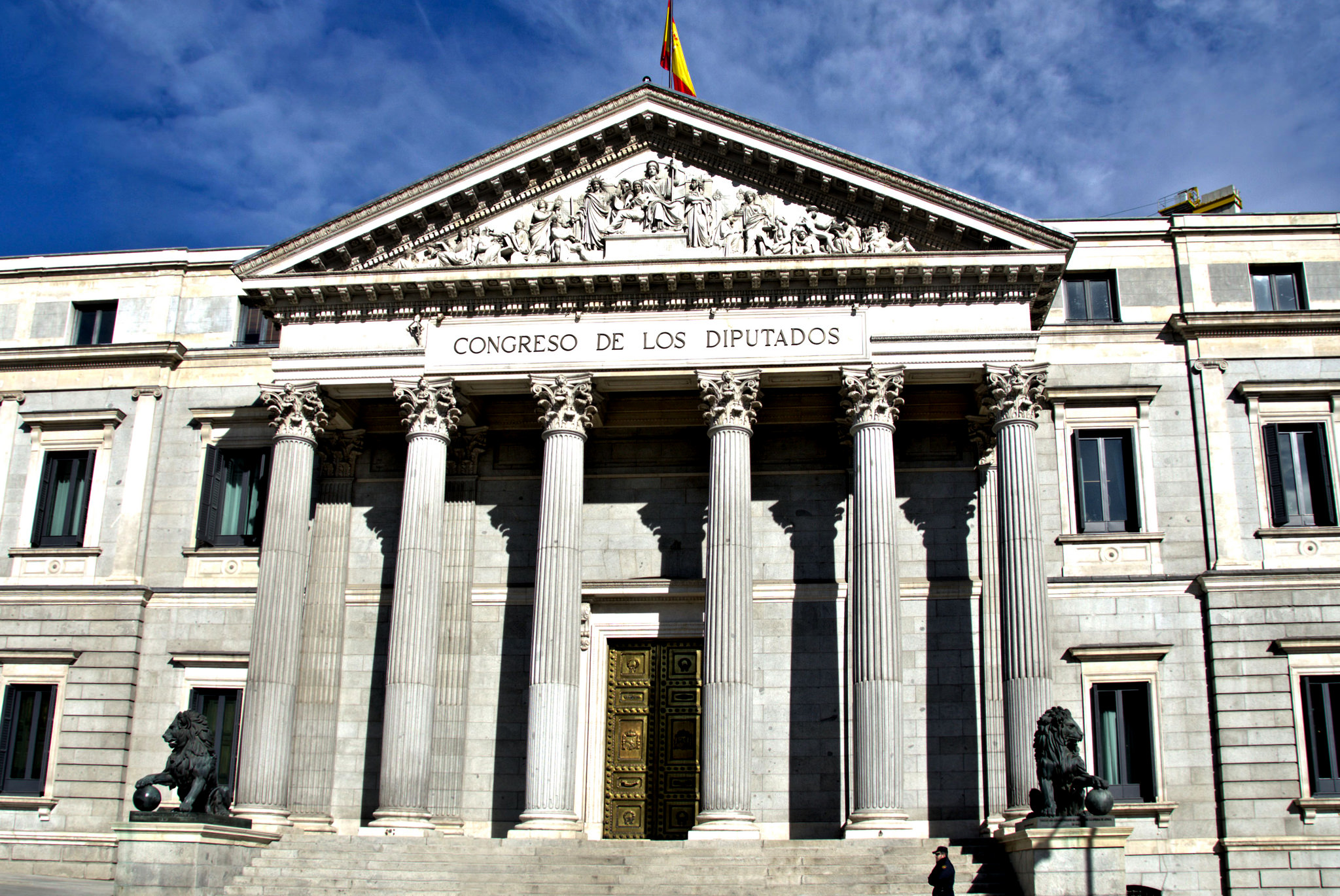If you plan to visit Madrid, the capital and largest city in Spain, you should definitely think about scheduling a short visit to the Palacio de las Cortes. Built in the 1800s, the Palacio de las Cortes is the building that once housed the entire Cortes, or Spanish parliament. Today the impressive structure is home to the Congreso de los Diputados, or lower house of the Spanish parliament. To help you become more familiar with this fascinating building, below we have compiled a brief overview, including some information regarding its history and characteristics.
Palacio de las Cortes: Overview
History of the Parliament
The history of the Cortes Generales, better known as just the “Cortes,” can be traced back to the 11th century, when the assembly was made up of clerical and nobility advisors who aided the Castilian king in making governance decisions. This was the basic function of the assembly for several centuries, however, in the early 19th century, the Cortes evolved into a much more modern and independent parliament, which in the year 1812 drafted and ratified a Spanish Constitution. The provisions in this constitution governed the country until 1978, when a new constitution was adopted after the death of the dictator Franco in 1975. This constitution provided for a parliament consisting of both a lower house—the Congreso de los Diputados (Congress of Deputies), which inhabits the Palacio de las Cortes—and an upper house—the Senado (Senate), which is housed by the Palacio del Senado, near the Plaza de España.
Characteristics of the Palacio de las Cortes
The Palacio de las Cortes is one of the most impressive examples of Spanish architecture of the 19th century. Standing outside of the building, one of the first things you will notice about the Palacio de las Cortes is its imposing nature, a nature characterized by a neoclassical front facing a triangular square, the Plaza de las Cortes. The main entrance to the building is flanked on each side by bronze statues of lions, framed by a large and brilliantly carved portico. The pediment is adorned with statues created by the artist Ponciano Ponzano. Collectively, they illustrate an allegorical representation of Spain, depicting the constitution surrounded by statues that represent courage, fortitude, justice harmony, science, rivers, agriculture, abundance, trade and peace. This ornate and very majestic entrance is used but once annually, when the Spanish king officially opens the parliamentary year.
Construction of the Palacio de las Cortes commenced in 1843 and continued for seven years. The building was completed in 1850 on the site of the Convento del Espíritu Santo, a convent that burned down in the year 1823. The bronze lions in front of the building were added in 1866. The entire structure was designed by the renowned architect Narcisco Pascual Colomer, a native of Valencia, Spain.
As you walk into the Palacio de las Cortes you will see that the interior is dominated by a large semicircular assembly hall. The ceiling was decorated in 1850, highlighted by a stunning and very colorful painting by Spanish artist Carlos Luis de Ribera. The painting depicts a number of Spain’s most admired historical figures, including Columbus, Velázquez, Cervantes and Queen Isabel II. As you look up at this beautiful painting you will probably notice a series of bullet holes, which remain as a reminder of a failed coup attempt in 1981, when right wing militants led by Colonel Tejero held the lower house of parliament hostage.
Palacio de las Cortes underwent renovations in 1991, when an extension was built adjacent to the historic structure. This new wing, which was designed by Rubert de Ventos, Oriol Clos and Josep Parcerisa, is characterized by a very modern design, one that features an abundance of curved glass and natural stone. This new extension stands in stark contrast with the neoclassical design of the original Palacio de las Cortes, a design that was extremely popular during the mid 19th century.



